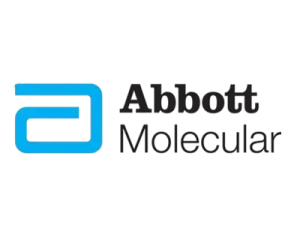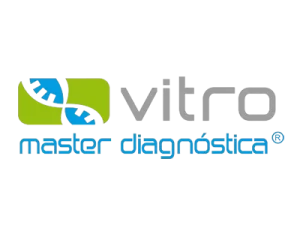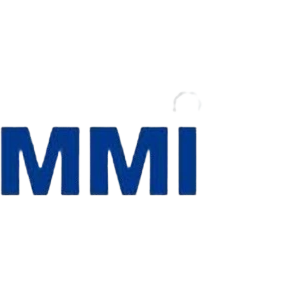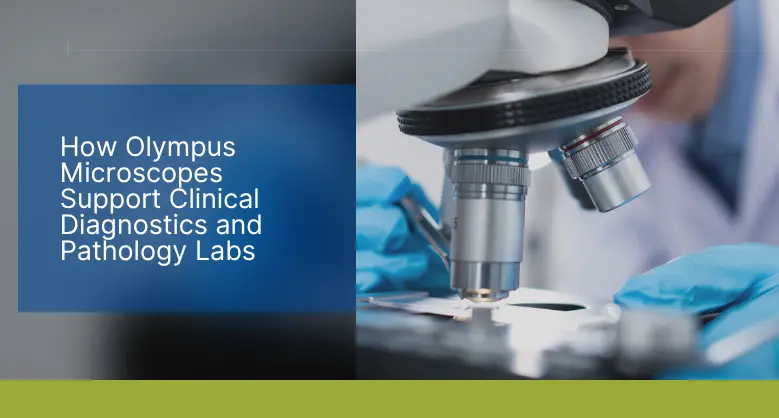DSS: Redefining Biotechnology & Life Science in India
- About Us
- Products & Services
PRODUCTS & SERVICES
-
Kits Reagents & Consumables
- Cytogenetics
- Dyes
- Fluorescence In Situ Hybridization (FISH)
- High-Performance Liquid Chromatography (HPLC)
- Histology
- Immuno Histo Chemistry (IHC)
- IVF Consumer bill
- Molecular Pathology & Diagnostics
- Multiplex Ligation-Dependent Probe Amplification (MLPA)
- Nucleic Acid Extraction
- PharmDx
- Real Time PCR
- Special Stains
- Instruments
- Software
- Accessories
- Advanced Material
-
Kits Reagents & Consumables
- Applications & Specialities
All Applications & Specialities
- Brands
- Contact Us
-

-
 0
0
- ☰
- About Us
- Products & Services
-
Kits Reagents & Consumables
- Cytogenetics
- Dyes
- Fluorescence In Situ Hybridization (FISH)
- High-Performance Liquid Chromatography (HPLC)
- Histology
- Immuno Histo Chemistry (IHC)
- IVF Consumer bill
- Molecular Pathology & Diagnostics
- Multiplex Ligation-Dependent Probe Amplification (MLPA)
- Nucleic Acid Extraction
- PharmDx
- Real Time PCR
- Special Stains
- Instruments
- Software
- Accessories
- Advanced Material
-
Kits Reagents & Consumables
- Applications & Specialities
- Brands
- Brand - Life Sciences
- 3i
- ABBERIOR INSTRUMENTS
- Abbott Molecular
- ADS Biotec
- APPLIED SPECTRAL IMAGING
- BioAir Tecnilabo
- DAKO (AGILENT)
- Eden Tech
- Elveflow
- ENTROGEN
- EUROCLONE
- EVIDENT
- Genea
- Hamamatsu Photonics
- Invivoscribe
- MASTER DIAGNOSTICA
- MBF BIOSCIENCE
- Medical Tek Co. Ltd
- MILESTONE MED SRL
- Molecular Machines & Industries
- MRC HOLLAND
- NeoDx
- Onward Assist
- Profound
- SCIENTIFICA
- SpaceGen
- Seqlo
- µCyte
- Brand - Industrial
- Brand - Life Sciences
- News & Events
- Career
- Contact Us
- Testimonial
- Blogs
- R&D
- CSR
- Press Release

Decoding MRC Holland: What It Is and Why It Matters in Genetic Research
BY DSS Imagetech Pvt Ltd October 15, 2025
In the vast and complex world of our DNA, tiny changes can have monumental consequences. For decades, scientists have sought reliable and efficient ways to read this genetic blueprint, to identify the variations that lead to disease, and to develop diagnostics that can change lives. In this quest, one name stands out as a true pioneer: MRC Holland. This Dutch company is not just a manufacturer of lab supplies; it is the inventor and primary developer of a revolutionary technique that transformed genetic testing: Multiplex Ligation-dependent Probe Amplification, or MLPA technology.
Understanding MRC Holland means understanding the power of MLPA. It’s a story about innovation, precision, and the relentless drive to provide researchers and clinicians with the tools they need to decode our most fundamental biological code. This technology has become an indispensable workhorse in laboratories around the globe, playing a critical role in everything from cancer research to diagnosing rare hereditary disorders. So, what exactly is MRC Holland, and why does its contribution to gene analysis matter so much to the future of medicine? Let’s dive into the world of genetic discovery and find out.
The Genesis of a Genetic Pioneer
Every revolutionary technology has an origin story, and for MLPA, that story begins with Dr. Jan Schouten and the founding of MRC Holland in 1985. Based in Amsterdam, the company was born from a clear and pressing need within the scientific community. At the time, genetic research was hampered by cumbersome, time-consuming, and often imprecise methods for studying genes. Techniques like Southern blotting, while groundbreaking in their day, were labor-intensive, required large amounts of high-quality DNA, and could only analyze one or a few genes at a time. The dream was to develop a method that was robust, high-throughput, and sensitive enough to detect subtle yet critical changes in our DNA.
Dr. Schouten’s vision was to create tools that would accelerate research and improve genetic diagnostics. The company’s philosophy was rooted in collaboration and scientific rigor. It wasn’t about mass-producing generic reagents; it was about solving specific problems faced by geneticists. This ethos led to a period of intense research and development, culminating in the invention of MLPA in the late 1990s and its first publication in Nucleic Acids Research in 2002.
The introduction of MLPA technology was a watershed moment. It provided a relatively simple, fast, and cost-effective method to determine the copy number of up to 60 different DNA sequences in a single reaction. This was a massive leap forward. Suddenly, researchers could screen for deletions or duplications across multiple exons of a large gene, or even across several different genes simultaneously. MRC Holland had not just created a new product; it had created a new standard. The company’s commitment to quality and continuous improvement ensured that the MRC Holland MLPA kits became the gold standard for copy number variation (CNV) analysis, cementing its reputation as a leader in the field.
Unraveling the Magic of MLPA Technology
MLPA is a semi-quantitative method for detecting relative copy number changes in specific DNA sequences. It’s particularly adept at finding copy number variations (CNVs)—the deletions or duplications of entire genes or parts of genes (exons), which are a common cause of many genetic disorders. While the name sounds complex, the process can be understood by breaking it down into four key steps. Imagine you’re a detective trying to find out how many copies of a specific page exist in a massive, multi-volume library. MLPA is your high-tech toolkit.
First is Denaturation and Hybridization. The DNA from a patient’s sample is heated, causing the two strands of the DNA helix to separate, or “denature.” Then, a unique cocktail called the MLPA probe mix is added. This mix, designed by MRC Holland, contains up to 60 pairs of short DNA probes. Each probe pair is designed to recognize and bind to a specific target sequence in the patient’s DNA. Think of these probes as two halves of a key, each designed to fit perfectly on either side of the DNA sequence of interest. They float around until they find their exact matching sequence on the separated DNA strands and then bind to it, a process called hybridization.
The second step is Ligation, and this is where the magic truly happens. Once a probe pair has correctly hybridized to its target sequence, with the two halves sitting perfectly adjacent to each other, a special enzyme called a ligase is added. This enzyme acts like a molecular glue. It joins the two probe halves together, creating a single, intact probe. Crucially, this ligation can only happen if both probes of a pair are bound to the correct target. If there’s a mismatch, or if the target DNA sequence isn’t there at all (as in a deletion), the two halves won’t be joined. This step ensures incredible specificity and is the cornerstone of the technique’s accuracy.
Third comes Amplification. Now that the ligated probes have been created, they serve as templates in a polymerase chain reaction (PCR). All the ligated probes, regardless of the target sequence they originally bound to, share the same “primer” binding sites at their ends. This allows a single pair of universal PCR primers to amplify all the ligated probes simultaneously in one reaction tube. Millions of copies of each successfully ligated probe are made. The probes that were not ligated are not amplified, effectively filtering them out of the final result.
The final step is Fragment Analysis. Each probe pair in the original MRC Holland MLPA kit is designed to have a unique length. Therefore, after amplification, the reaction tube contains a mixture of DNA fragments of different, precisely known sizes. These fragments are then separated by size using a technique called capillary electrophoresis. The machine detects each fragment and measures the fluorescent signal it produces. By comparing the signal intensity of each fragment from the patient sample to that of a reference sample (with a normal two copies of each gene), a ratio is calculated. A ratio of ~1.0 represents a regular copy count (two copies). A ratio of ~0.5 indicates one deletion, and a ratio of ~1.5 indicates three duplications. Thus, MLPA provides semi-quantitative, relative results that give a reliable overview of copy number changes in the analyzed genes.
Why MLPA Became the Gold Standard in Genetic Diagnostics
The rapid adoption of MLPA technology was no accident. It addressed several major limitations of previous methods for gene analysis, establishing itself as the go-to technique for copy number analysis in thousands of labs worldwide. Its success is built on a combination of efficiency, accuracy, and versatility that was previously unattainable.
One of the most significant advantages of MRC Holland MLPA is its multiplexing capability. Before MLPA, analyzing a large gene like DMD (associated with Duchenne muscular dystrophy), which has 79 exons, was an arduous task. A researcher would have to perform dozens of separate experiments. MLPA allows for the simultaneous analysis of up to 60 different genomic targets in a single, small-volume reaction. This high-throughput capacity drastically reduces hands-on time, reagent costs, and the amount of patient DNA required, making comprehensive genetic testing more feasible and accessible.
Minimum DNA concentration for MLPA is 50 ng, whereas for digitalMLPA (NXtec) it is 20 ng. Although MLPA requires far less DNA than Southern blotting, its performance is more sensitive to DNA quality degradation, fragmentation, or contaminants can reduce probe hybridisation or ligation efficiency, affecting results. With good quality, properly quantified DNA, MLPA yields reliable copy number data.. The ligation step provides an intrinsic control for specificity, ensuring that the results are highly reliable and reproducible. This level of confidence is paramount when making a genetic diagnosis that will guide clinical decisions and patient counseling.
Compared to other techniques, MLPA strikes an ideal balance. While FISH (fluorescence in situ hybridization) can detect large deletions, it has low resolution and cannot be easily multiplexed. Array CGH (Comparative Genomic Hybridization) offers a genome-wide view but is more expensive and complex, often making it overkill for targeted gene testing. DNA sequencing, especially Next-Generation Sequencing (NGS), is excellent for detecting single-nucleotide changes but can struggle with accurately identifying large deletions and duplications. In fact, MLPA is now widely used as a complementary and confirmatory tool alongside NGS, as it excels precisely where sequencing can be weak. For this reason, many genetic diagnostics workflows incorporate both technologies to provide a complete picture of a patient’s genetic landscape.
A Spectrum of Applications: The Reach of MRC Holland’s MLPA Kits
The true impact of a technology is measured by its real-world applications. Here, the versatility of the MLPA kits developed and commercialized by MRC Holland shines through. There are over 350 probemixes mentioned on the website.
In oncology, MLPA has become indispensable for both hereditary cancer risk assessment and tumor profiling. MRC Holland MLPA kits for genes like BRCA1 and BRCA2 are used globally to identify large deletions or duplications that predispose individuals to breast and ovarian cancer. These types of mutations are missed by standard sequencing methods but are reliably detected by MLPA. For tumor analysis, MLPA helps identify amplifications of oncogenes or deletions of tumor suppressor genes, providing crucial information for prognosis and targeted therapy selection.
For hereditary diseases, MLPA is often the first-line test. In diagnosing Duchenne muscular dystrophy, for example, about 65% of cases are caused by large deletions or duplications within the DMD gene—a perfect application for MLPA. Similarly, it is the primary method for diagnosing Spinal Muscular Atrophy (SMA) by quantifying the copy number of the SMN1 and SMN2 genes. Other well-known applications include detecting deletions in Williams-Beuren syndrome, Phelan-McDermid syndrome, and countless other rare genetic disorders.
The technology’s reach extends to prenatal and postnatal diagnostics. Rapid aneuploidy screening kits can quickly detect common chromosomal abnormalities like Trisomy 21 (Down syndrome), Trisomy 18 (Edwards syndrome), and Trisomy 13 (Patau syndrome) using DNA from amniotic fluid or chorionic villus samples. This provides faster results than traditional karyotyping.
In addition, pharmacogenomics, or the research of how genetics influences a person’s reaction to medications, is an expanding field for MLPA. Kits can identify copy number variations in genes encoding drug-metabolizing enzymes, helping to predict whether a patient will experience adverse effects or require a different dosage of a particular medication, paving the way for personalized medicine.
Beyond Copy Number Variations: The Evolving Capabilities of MLPA
Development at MRC Holland continued beyond the conclusion with CNV discovery. The company continued to refine and expand the capabilities of its core technology, leading to the development of Methylation-Specific MLPA (MS-MLPA). This ingenious adaptation allows for the simultaneous analysis of both DNA copy number and methylation status.
DNA methylation is an epigenetic mechanism—a modification that doesn’t change the DNA sequence itself but alters gene activity. It acts like a dimmer switch, turning genes on or off. Abnormal methylation patterns are a known cause of several “imprinting” disorders. In these conditions, the expression of a gene depends on whether it was inherited from the mother or the father.
The classic examples are Prader-Willi syndrome (PWS) and Angelman syndrome (AS). Both are caused by the loss of function of genes in the same chromosomal region (15q11-q13), but PWS results from the loss of the paternally expressed genes, while AS is caused by the loss of the maternally expressed gene (UBE3A). MS-MLPA can distinguish between these two conditions in a single test. It uses methylation-sensitive restriction enzymes that will only cut unmethylated DNA. By comparing the results of a sample with and without this enzyme treatment, researchers can determine both the copy number and the methylation pattern of the region, providing a comprehensive and definitive diagnosis. This dual-analysis capability has made MS-MLPA the gold standard for diagnosing imprinting disorders and is increasingly used in cancer research to study aberrant methylation of tumor suppressor genes.
This evolution demonstrates a key principle of MRC Holland: pushing the boundaries of gene analysis to answer more complex biological questions with a single, elegant technique.
From the Lab Bench to the Clinic The Real-World Impact
Technical specifications and scientific principles are important, but the true significance of MRC Holland and its MLPA technology is best illustrated through its impact on people’s lives. Consider a hypothetical but highly realistic scenario.
Sarah, a 35-year-old woman, has an extended family background in breast cancer. Her mother was diagnosed at 45, and her maternal aunt at 52. Concerned about her own risk, Sarah consults a genetic counselor, who recommends genetic testing for the BRCA1 and BRCA2 genes, which are strongly linked to hereditary breast and ovarian cancer.
The specimen of blood is delivered to a genetic diagnostics laboratory. The initial phase in their method is regular DNA sequencing. The results come back negative; no pathogenic point mutations or small insertions/deletions are found in either gene. For many, the journey might end here. However, this lab follows best-practice guidelines and knows that a significant percentage of BRCA1 and BRCA2 mutations are large genomic rearrangements—entire exons or multiple exons that are either deleted or duplicated. These are invisible to standard sequencing.
The lab then performs a follow-up test using an MRC Holland MLPA kit specifically designed for BRCA1 and BRCA2. The analysis is quick. The results from the fragment analyzer show a clear ~50% reduction in the signal for the probes corresponding to exons 1 through 5 of the BRCA1 gene. The diagnosis is now clear: Sarah has a large deletion in the BRCA1 gene, which explains her family’s history of cancer and places her at a significantly elevated risk.
This definitive result, made possible by MLPA technology, empowers Sarah and her healthcare team. She can now make informed decisions about increased surveillance (more frequent mammograms and MRIs), risk-reducing medications, and preventive surgeries. Her family members can also be tested for the specific deletion, allowing those who have inherited it to take proactive steps while reassuring those who haven’t. This is the tangible, life-altering power of MRC Holland’s innovation—translating a complex molecular test into clarity, empowerment, and a concrete plan for managing health.
The Future is Collaborative and Precise
The landscape of gene analysis is constantly evolving. The rise of Next-Generation Sequencing (NGS) has enabled us to read entire genomes at an incredible speed. Yet, even in this NGS-dominated era, MLPA technology remains more relevant than ever, not as a competitor, but as a vital partner.
MRC Holland actively fosters a collaborative ecosystem, working closely with researchers and diagnostic labs to refine existing MLPA kits and develop new ones to meet emerging needs. The future lies in a multi-modal approach to genetic diagnostics. An ideal workflow often involves using NGS for its broad screening power to detect single-nucleotide variants and small indels, complemented by MLPA for its unparalleled accuracy in detecting and confirming copy number variations. This synergistic relationship ensures the most comprehensive and reliable genetic workup possible.
The company’s focus remains on precision and reliability. As our understanding of the genetic underpinnings of disease becomes more nuanced, the demand for targeted, accurate, and cost-effective tests like MLPA will only grow. MRC Holland continues to innovate, developing new probe sets for newly discovered disease genes and refining its software to make data analysis even more streamlined and user-friendly. The goal is to continue providing the tools that enable scientists and clinicians to move from massive datasets to actionable insights with confidence.
Decoding Our Future One Gene at a Time
From its origins in a small Amsterdam lab to its current status as a global leader in genetic diagnostics, the story of MRC Holland is a testament to the power of targeted innovation. By inventing and perfecting MLPA technology, the company provided the scientific community with a tool that is at once simple, powerful, and profoundly impactful.
MLPA filled a critical gap, enabling the routine detection of copy number variations with a level of efficiency and accuracy that was previously unimaginable. It has become a cornerstone of modern genetic testing, providing definitive answers for countless patients and families affected by a wide spectrum of disorders, from rare hereditary conditions to common cancers.
As we continue to unravel the complexities of the human genome, the need for robust, reliable, and accessible tools for gene analysis will remain paramount. MRC Holland, with its unwavering commitment to quality and its spirit of collaborative innovation, is set to continue playing a pivotal role in this journey. It reminds us that sometimes, the greatest leaps forward come not from the most complex or expensive technologies, but from the most elegant and intelligent solutions, decoding our future one gene at a time.
FAQ’s:
Q1. What is MRC Holland and why is it important in genetic research?
MRC Holland is a Dutch company founded in 1985. It is known for developing tools for the detection of DNA copy numbers and methylation patterns associated with disease. The SALSA® MLPA® technique is the gold standard in this field, and is used around the world to study hereditary disorders and tumours. SALSA MLPA offers a high-throughput, cost-effective method to detect deletions and duplications in up to 60 genomic targets simultaneously and is widely used in clinical diagnostics and research, particularly for studying hereditary disorders, tumor profiling, and methylation status. In addition to SALSA MLPA, MRC Holland has other technologies:
• MS-MLPA is a variant of the SALSA MLPA technique. It combines MLPA with the methylation-sensitive endonuclease HhaI which allows for the detection of both DNA copy number and methylation status
• SALSA® Melt Assays SMA newborn screening
• digitalMLPATM, a powerful combination of the trusted SALSA® MLPA® technology and next-generation sequencing, meeting your large-scale copy number detection needs.
Beyond its innovative technologies, MRC Holland’s mission and vision make it a cornerstone in genetic research worldwide:
• Quality: Delivering high-quality, reliable assays that ensure confidence in genetic testing results.
• Accessibility: Providing affordable assays globally, making advanced genetic diagnostics accessible to laboratories in all regions.
• Diversity of portfolio: Offering a wide range of products covering both common and rare genetic disorders.
• Global impact: Enabling testing in millions of samples worldwide, reflecting the company’s significant contribution to precision medicine and genetic research.
Through its continued innovation and global reach, MRC Holland plays a pivotal role in advancing molecular diagnostics and improving understanding of genetic diseases.
Q2. What is MLPA technology and how does it work?
MLPA is a simple, multiplex PCR technique that uses a single primer pair to amplify up to 60 probes, each with a unique genomic target and length. PCR amplicons are fluorescently labelled and separated and quantified by capillary electrophoresis. By comparing the resulting peak pattern of a sample to those of a set of reference samples, the number of genomic targets present in the sample of interest can be determined.
For more information:
https://www.mrcholland.com/technology/mlpa
Q3. What are the most widely used MRC Holland MLPA kits?
At the moment, MRC Holland has >350 MLPA assays and ~15 MS-MLPA assays in their product portfolio for many different applications.
Examples include:
- Predisposition to Cancer: (P002 BRCA1, P090 BRCA2 and many others)
- Neuromuscular Disorders: (P034/DMD-1; P035 DMD-2, P021 SMA and many others)
- Prenatal/Aneuploidy: (P095 Aneuploidy and many others)
- Hereditary Blood Disorders: (P140 HBA (alpha-thalassemia), P102 HBB (beta-thalassemia) and many others)
- Combined CNV and Methylation Analysis: (ME028 Prader-Willi/Angelman and many others)
This broad coverage makes MLPA a gold standard for detecting both copy number and methylation changes in genetic diagnostics.
Assay Finder:
https://www.mrcholland.com/products
General MLPA Brochure Link:
https://support.mrcholland.com/downloads/files/brochure-general-mlpa-information
Predisposition to Cancer:
https://support.mrcholland.com/downloads/files/flyer-predisposition-to-cancer-applications
MS-MLPA Flyer Link:
https://support.mrcholland.com/downloads/files/flyer-ms-mlpa
Q4. How does MLPA complement Next-Generation Sequencing (NGS)?
MLPA can be used to detect copy number changes in anything from complete chromosomes to single exons. While NGS is highly effective at detecting point mutations and small insertions/deletions (indels), it can sometimes miss large deletions, duplications, or copy number variations (CNVs). MLPA fills this gap by providing highly reliable CNV detection, capable of detecting copy number changes ranging from entire chromosomes down to single exons. Many laboratories use MLPA alongside NGS for a comprehensive genetic analysis, combining sequence-level and copy number information to ensure accurate and actionable results for patients.
Whether CNV detection with NGS can be done in a reliable manner highly depends on the region of interest. Regions that are rich in GC-content, highly repetitive or prone to secondary structure formation will be more difficult to sequence and will further reduce the reliability of CNV detection using NGS.
If a significant percentage of the affected samples are likely to have a CNV it makes sense to first use a method that detects these CNVs in the fastest and most reliable manner such as MLPA or digitalMLPA. The CNV-negative samples can then be further analysed with a different technology such as NGS to determine if a less frequent point mutation is present. However, if the majority of samples are expected to harbour point mutations, it makes more sense to use the opposite workflow. In some cases, laboratories may opt to perform both assays concurrently to obtain a more comprehensive molecular profile or to accelerate the turnaround time for reporting results.
Latest Articles
World AIDS Day: Breaking the Stigma and Understanding HIV Testing
BY DSS Imagetech Pvt Ltd December 1, 2025
Worlds AIDS Day 2025 focuses on the theme “Overcoming disruption, transforming the AIDS response.” Highlighting the need for a stronger, more resilient approach to end the epidemic. This theme acknowledges...
Read MoreHow Olympus Microscopes Support Clinical Diagnostics and Pathology Labs
BY DSS Imagetech Pvt Ltd November 26, 2025
In the world of modern medicine, the clinical diagnostics laboratory is the engine room of the healthcare system. It is a high-stakes, high-pressure environment that operates largely unseen by the...
Read MoreThe Role of Genetic Testing (BRCA, Onco-panels) in Breast Cancer...
BY DSS Imagetech Pvt Ltd November 18, 2025
Breast cancer is a complex and deeply personal diagnosis that will affect many women in their lifetime. For decades, our primary approach was reactive: focusing on awareness, monthly self exams,...
Read More





























